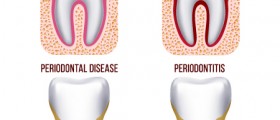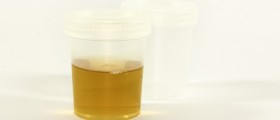
The normal color of the dorsal side of the tongue in a majority people is pinkish-red. Some people believe that the appearance of the oral cavity, particularly the tongue reflects a person's general health. A tongue's color may change, due to many health conditions and imbalances in the body. The conditions responsible for a change in the tongue's appearance can be systemic or oral and in both cases they require proper treatment. There is a variety of factors which influence the change in tongue's color and here are the most common ones.
Vitamin Deficiency and Red Tongue
This is one of the leading causes of red tongue. One may suffer from multiple vitamin or mineral deficiencies or there is a lack of only one specific vitamin/mineral. Red tongue generally reflects lack of vitamin B12 (pernicious anemia) and it may also affect people suffering from folic acid deficiency. Both of the vitamins are normally found in meat so this drives us to conclude that these particular vitamin deficiencies most commonly affect vegetarians. Even lack of B3 vitamin, which represents a cause of pellagra, may lead to change in tongue's color. The tongue in pellagra is bright red.
Tongue Infections and Red Tongue
Among a variety of infections which may affect the tongue, the most common one is candidiasis. This is a fungal infection which typically leads to inflammation of the tongue's surface. The tongue becomes red and is covered with white coating which can be peeled. Once the coating is removed the tongue's bright red color becomes noticeable.
Geographic Tongue
This condition causes the shedding of filiform papillae and it may affect different parts of the dorsal side of the tongue. Shedding subsequently leads to formation of irregular patches. These patches are red and may be bordered by grayish white. The affected area eventually heals and new papillae grow while other parts of the tongue may be affected and the condition keeps moving from one region to another. This is why the condition also carries the name benign migratory glossitis.
Systemic Diseases and Red Tongue
Red tongue is a characteristic of certain systemic diseases. For example, some autoimmune diseases may feature with specific change in tongue's color. One example is Kawasaki disease, a type of vasculitis. This condition features with a bright red tongue which resembles strawberry. Scarlet fever is another systemic condition which always leads to specific changes on the tongue. In this disease the tongue is bright red and similarly to Kawasaki disease it resembles strawberry. There are several more conditions associated with red tongue and they include toxic shock syndrome, Plummer-Vinson syndrome, tropical sprue etc.
















Your thoughts on this
Loading...